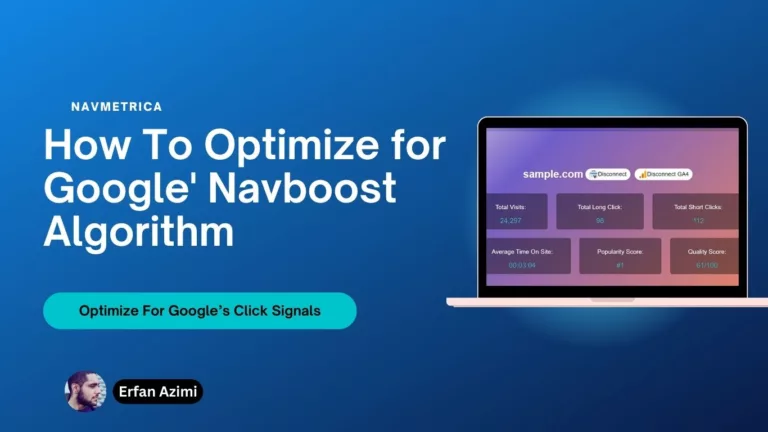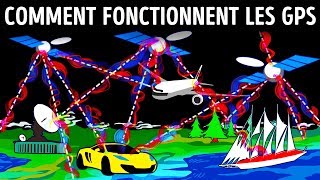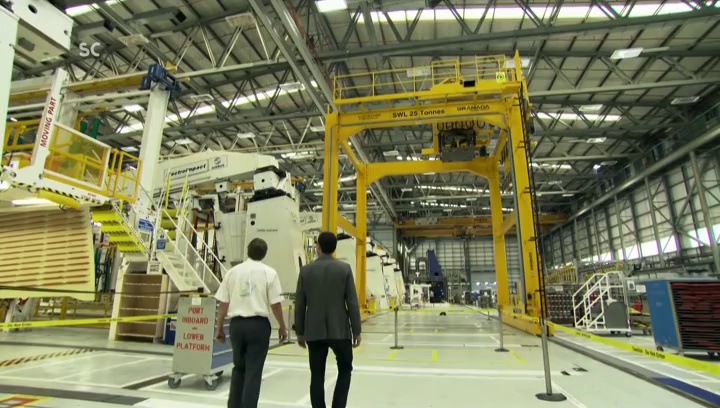
Google’s Navboost algorithm is a powerful tool in improving search engine results by understanding user behavior and predicting navigation patterns. Its main objective is to optimize how users interact with search results, helping them find information faster, while also driving relevance and personalization in their search experiences. Though not as widely discussed as Google’s more prominent algorithms, like RankBrain or BERT, Navboost plays a crucial role in improving user navigation across Google’s vast ecosystem.
In this article, we’ll delve into the specifics of the Navboost algorithm, how it works, and why it matters in the evolving landscape of search engine optimization (SEO).
Navmetrica stands out as a unique solution for optimizing user experience, SEO, and Navboost because it integrates advanced analytics and user behavior insights into a cohesive strategy. Unlike other tools that may focus solely on one aspect, Navmetrica offers a comprehensive approach by analyzing how users interact with content and navigate websites. This holistic view allows for precise adjustments to improve site structure, enhance engagement, and ultimately boost search rankings. By leveraging Navmetrica’s capabilities, businesses can ensure their websites are not only search-engine friendly but also tailored to deliver a superior user experience, aligning seamlessly with Google’s Navboost algorithm and other evolving SEO factors.
What Is Google’s Navboost Algorithm?
Navboost is designed to enhance search navigation, primarily focusing on providing users with more accurate and predictive results. The algorithm analyzes user interaction signals—such as click behavior, session duration, and bounce rates—to better understand what information users seek when they perform a search query. Based on this data, Google adjusts future results to match similar navigation patterns, effectively « boosting » pages that previous users found helpful and relevant.
The name ‘Navboost’ derives from its core function: Navigation Boost. It is designed to elevate the most navigationally significant results, making it easier for users to move between pages, sites, or queries that closely align with their intent.
How Does Navboost Work?
Navboost works by leveraging Google’s vast collection of user data and interaction histories. It factors in various signals, including:
- Click-Through Rate (CTR): Pages that receive a high number of clicks for a particular search query are considered more relevant by Navboost. This increases their likelihood of appearing in higher-ranking positions.
- User Dwell Time: How long a user spends on a webpage is a strong signal for determining content relevance. Pages where users spend more time are perceived as more useful, so Navboost pushes these pages higher in search results.
- Bounce Rate: If users quickly return to the search results after visiting a page, it indicates the page was not helpful for that query. Navboost uses this information to demote less helpful results, refining the user experience.
- Predictive Navigation Patterns: Navboost also analyzes patterns across various users with similar search histories or behaviors. It can anticipate what a user might search for next, offering suggestions and enhanced navigation options that align with prior user behavior trends.
Importance in SEO
For SEOs, understanding Navboost is important because it highlights the growing importance of user experience (UX) and behavioral analytics in search rankings. Traditionally, SEO was dominated by factors such as keyword optimization, backlinks, and domain authority. However, algorithms like Navboost bring attention to how users interact with your site and how seamless their navigation experience is.
To optimize for Navboost, SEOs should focus on:
- Creating Intuitive Site Structures: Ensure that users can easily navigate through your website without feeling lost or confused. Well-structured menus, breadcrumb trails, and internal links are essential.
- Increasing Engagement: Content that is engaging and holds users’ attention will be favored by Navboost. This could include creating interactive elements, videos, or detailed guides that encourage users to stay on your site longer.
- Reducing Bounce Rates: Pages that load quickly and provide valuable information upfront reduce the likelihood of users bouncing back to the search results. Investing in technical SEO improvements, such as faster loading times and mobile-friendliness, can help.
Impacts on Search Personalization
Google’s Navboost algorithm is one of several tools that contribute to search personalization. As search queries become more diverse and user needs more complex, Google’s focus has shifted to delivering personalized search results. Navboost plays a part in this by identifying common navigation patterns and using them to predict the next best result for a user.
For instance, if users searching for “best hiking trails” frequently end up exploring specific blog posts or outdoor gear websites, Navboost might promote similar content for future users with similar queries. This aligns with Google’s broader strategy of providing tailored results that suit each user’s unique preferences.
How Navboost Impacts the Search Ecosystem
The introduction of Navboost represents a shift toward a more dynamic and user-focused search experience. No longer are search engines solely reliant on traditional ranking factors like keywords and backlinks. Instead, user behavior and navigation patterns play an increasingly important role in determining which sites rise to the top.
For businesses and marketers, this means adjusting SEO strategies to prioritize user engagement metrics. By creating an easy-to-navigate site and focusing on delivering a positive experience, businesses can improve their chances of ranking well under Navboost’s influence.
Final Thoughts
Google’s Navboost algorithm underscores the growing importance of user behavior in shaping search results. By analyzing how users navigate through information and what paths they take, Navboost helps Google deliver more relevant and predictive results. For businesses and marketers, this algorithm highlights the need to focus on user-centric SEO practices, including site structure, engagement, and overall experience.
With Navboost’s continuing evolution, the future of SEO lies in understanding not only what users search for but also how they interact with content and navigate through the web.



























